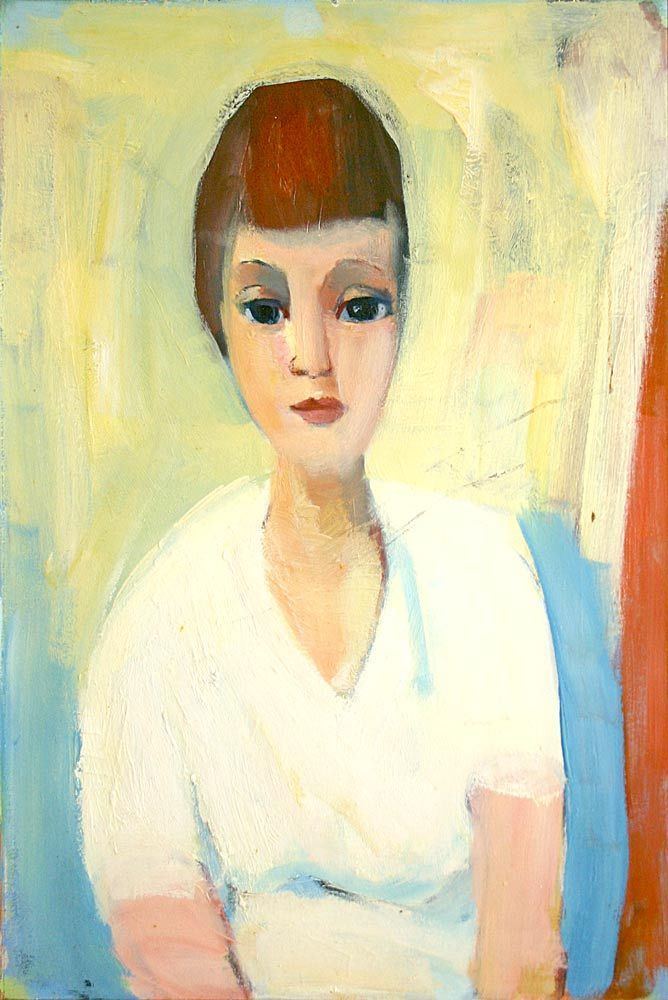Name Friedrich Ludwig Role Painter | Died January 22, 1970 | |
 | ||
Friedrich Ludwig (1895–1970) was a German expressionist painter.
Contents
Early life
Friedrich Ludwig was born the ninth of seventeen children of a farming family in Wieslet, in the Black Forest region of Southern Germany. After attending elementary school and artistic instruction he worked from 1913 to 1917 as a decorator in Zurich, Switzerland. Although he identified politically as a pacifist, he presented himself unwillingly in 1917 to the German military service.
Artistic career
In 1920 Ludwig affiliated himself with the "Badenweiler Circle", a group of people including Thomas Mann, Emil Bizer, Annette Kolg, Alfred Krupp among others. He traveled to Italy in 1922 and came into contact with the work of Piero della Francesca, whose work impressed him lastingly. Motivated by this first journey, he visited Italy in 1924 a second time, though up to today no work of his from this period has been discovered. From 1922 to 1926 Ludwig completed education at the Städel school in Frankfurt. Then in 1926 he was accepted at the Académie Julian in Paris, which is famous for their training, and discovering and promoting artists such as Cézanne, Gaugin, Emil Bernaed, Maurice Denis (one of the founders of the group of artists of NABIS), Pierre Bonnard, Eduard Vuillard, Maillol and Achille Laugé. The time from 1928 to 1930, while surrounded and affected by those Parisian artists, is considered Ludwig's most creative period. In 1931, Ludwig went to look for internal peace in Bad Reichenhall, Bavaria. This period in his artwork is characterized by the depiction of nature and landscapes. His first official exhibition in 1934 in Munich was forbidden by the Nazi official Adolf Wagner, who described it as "in an un-German manner". Despite this setback, the gallery "Neupert" in Zurich offered to Ludwig an exhibition of his work in 1935. After this successful exhibition he rejected an offer to remain in Switzerland and traveled over Bellinzona to the Adria, to Paris and over Wieslet and back to Bad Reichenhall, where he established himself in 1940. Here he painted the impressive row "The Blue Mountains". After the surrender of the Third Reich in 1945 he received permission from the Americans to be allowed to paint again without restrictions and moved to Berchtesgaden, Bavaria.
In 1965 Ludwig exhibited two of his works in Munich along with the group "Blauer Reiter". Several comprehensive and successful exhibitions follow at Munich's "Gallery Karin Hielscher", as well as several meetings with the art critic and historian Reinhard Mueller Mehlis. In 1965 he exhibited at the "Regensburger Gallery".
Personal life
On 27 December 1954 Ludwig married Christel Sprengel, and in 1955 his son Michael was born. His wife left him in 1959 and moved with their son to Piding, Bavaria. Some first concerns over his psychological condition were expressed by his wife in a letter to Swiss art historian Werner Mueller, in which she reported that Ludwig seemed to be occasionally confused and emotionally absent. On 31 July 1968 he was admitted to the mental hospital Gabersee in close proximity to Wasserburg, Inn. His son Michael committed suicide at the age of thirteen. Then on 22 January 1970 Friedrich Ludwig himself died in the hospital at Gabersee, and was buried in Piding beside his son.
Work
He is ranked to the "expressionists of the second generation", and/or among the "expressionists of the lost and/or forgotten generation". Later in his life, Ludwig gave his pictures to be burned, and therefore was almost forgotten in the world of art. Sigurd Marien in 1984 had approximately 2000 Ludwig pictures rediscovered. They were made accessible in 1999 to the public through the Friedrich Ludwig museum, at Ludwig's place of residence in Wieslet.
